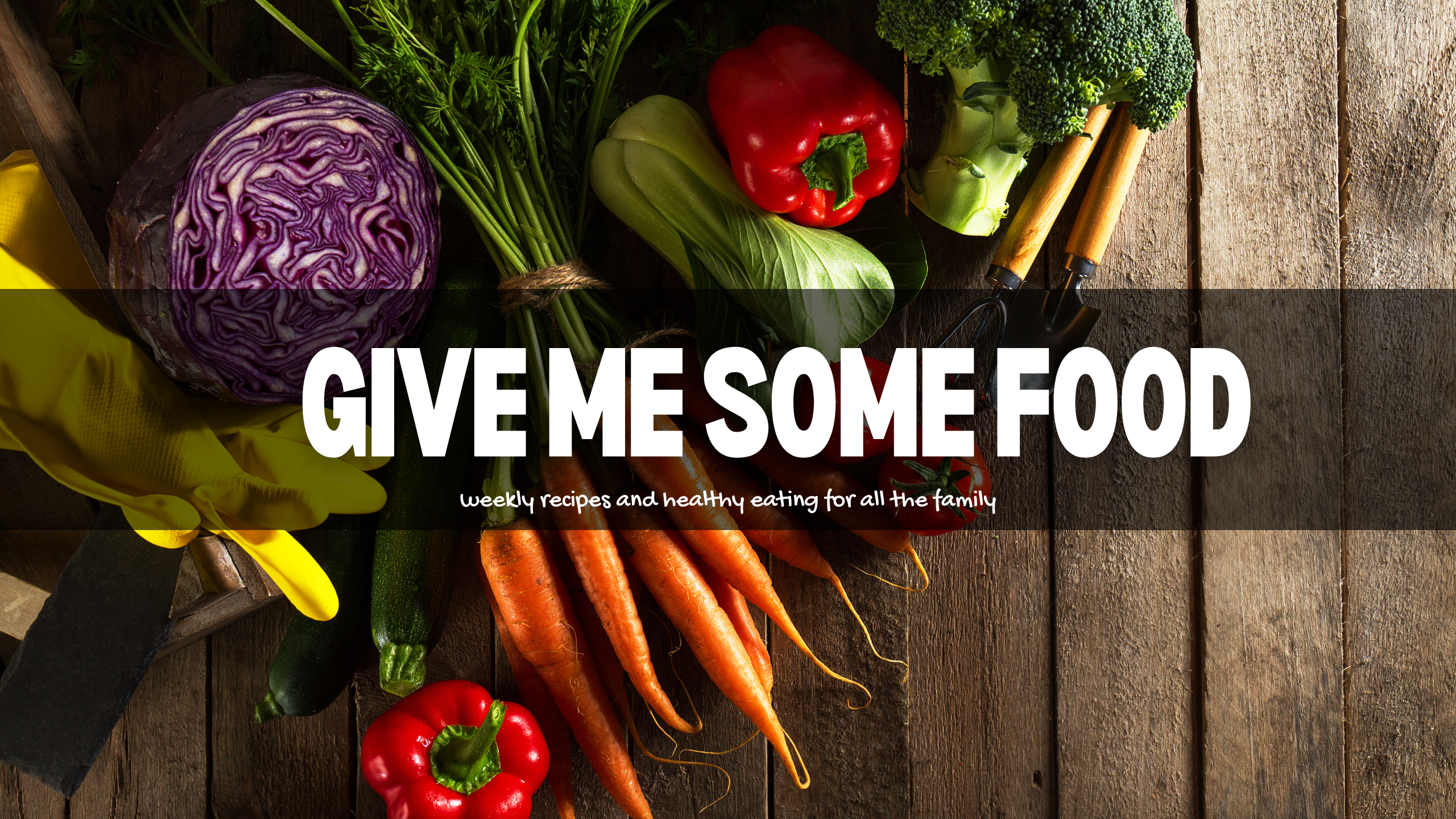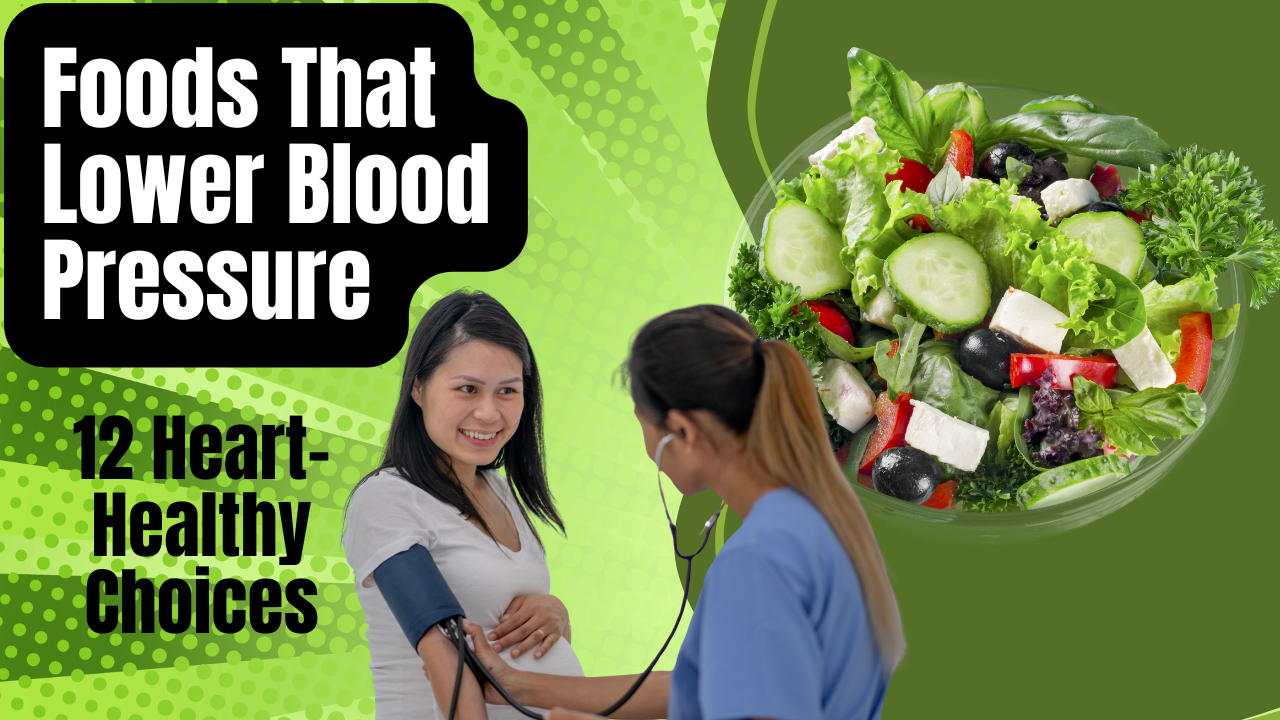High blood pressure, also known as hypertension, is a common yet serious health condition that affects millions of people worldwide. If left unmanaged, it can lead to heart disease, stroke, kidney issues, and other life-threatening complications. Fortunately, one of the most effective ways to manage blood pressure naturally is through diet. By incorporating the right foods that lower blood pressure into your daily routine, you can maintain healthy blood pressure levels and improve overall cardiovascular health. 🥦🍓
Eating a balanced diet rich in specific nutrients, such as potassium, magnesium, and fiber, can help relax blood vessels, reduce arterial stiffness, and promote better heart function. Modern research has consistently shown that certain foods directly impact blood pressure, and integrating them into your meals can complement lifestyle changes like regular exercise, stress management, and proper sleep. In fact, dietary adjustments are often recommended as the first line of defense against hypertension.
This article will guide you through the top 12 foods that lower blood pressure, explaining why they work, how to include them in your diet, and the scientific benefits behind each choice. Whether you are looking to prevent hypertension or manage existing blood pressure issues, this comprehensive guide will equip you with the knowledge to make heart-healthy decisions. By the end of this article, you’ll have a practical, actionable plan to naturally support your cardiovascular health through delicious, nutrient-rich foods. 🍊🥑
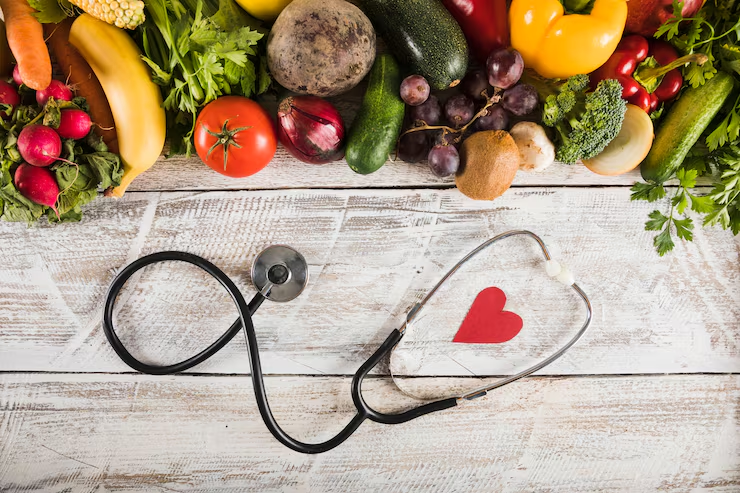
What Are Foods That Lower Blood Pressure?
Foods that lower blood pressure are specific items in your diet that have been scientifically proven to help reduce and regulate blood pressure levels. These foods are typically rich in essential nutrients like potassium, magnesium, calcium, antioxidants, and fiber, all of which contribute to better heart health. Potassium helps balance sodium levels in your body, magnesium relaxes blood vessels, calcium supports vascular function, and antioxidants reduce inflammation in the arteries.
Many fruits, vegetables, whole grains, nuts, seeds, and lean proteins fall into this category. For instance, leafy greens like spinach and kale are packed with potassium and magnesium, while berries contain flavonoids that improve vascular function. Whole grains such as oats and quinoa are high in fiber, which supports overall cardiovascular health. Even certain beverages, like green tea, can contribute to lower blood pressure when consumed regularly.
Understanding these foods is critical because dietary choices play a major role in preventing and managing hypertension. Unlike medications, which often come with side effects, natural foods that lower blood pressure provide additional health benefits, including weight management, improved digestion, and reduced risk of chronic diseases. By prioritizing these foods, you’re not just lowering blood pressure—you’re taking a holistic approach to long-term wellness. 🌿🥕
Why Should You Include Foods That Lower Blood Pressure?
Including foods that lower blood pressure in your daily diet is essential for maintaining optimal heart health. Hypertension often develops silently, showing no symptoms until severe complications occur. Therefore, proactively consuming heart-friendly foods can prevent the onset of high blood pressure and its associated risks, including stroke, heart attack, and kidney disease.
Moreover, these foods help combat other lifestyle-related issues. For example, many of them aid in weight management, improve metabolic function, and reduce inflammation throughout the body. Chronic inflammation and obesity are both significant contributors to high blood pressure, so addressing them through diet is highly effective. Foods rich in fiber and antioxidants, such as fruits, vegetables, and legumes, play a dual role: they help regulate blood sugar levels and support healthy blood pressure.
Lastly, incorporating these foods into your lifestyle is a sustainable, natural approach to wellness. Unlike temporary dietary fads or strict restrictions, focusing on foods that lower blood pressure allows for a flexible, enjoyable, and balanced diet. This approach ensures long-term adherence and reduces the likelihood of health complications. 🌟💚
Top Foods That Lower Blood Pressure
Spinach 🥬
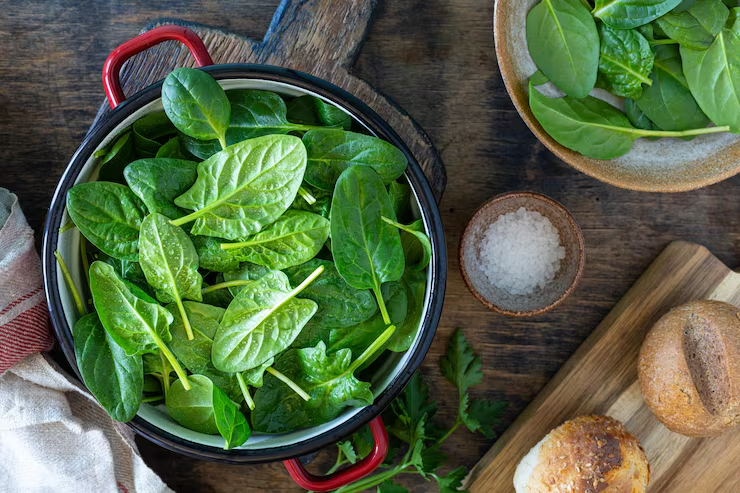
Spinach is one of the most powerful foods that lower blood pressure due to its rich content of potassium, magnesium, and nitrates. Potassium works to balance sodium levels in your body, preventing fluid retention that can increase blood pressure. Magnesium helps relax the walls of blood vessels, which promotes smooth blood flow and reduces strain on your heart. Incorporating spinach into your daily diet can have a profound effect on maintaining optimal blood pressure levels naturally.
Beyond its high nutrient profile, spinach also contains antioxidants such as beta-carotene, lutein, and vitamin C. These compounds reduce oxidative stress in blood vessels, which is a key contributor to hypertension. Regular consumption of spinach, either raw in salads or lightly steamed, can improve vascular function over time. Research consistently shows that individuals who consume more leafy greens like spinach tend to have lower systolic and diastolic blood pressure compared to those with lower intake.
Incorporating spinach is simple and versatile. It can be added to smoothies, soups, sandwiches, or pasta dishes to boost both nutrition and flavor. Eating spinach regularly alongside other foods that lower blood pressure ensures that your diet supports cardiovascular health effectively. By making spinach a daily habit, you are proactively taking a natural approach to blood pressure management while enjoying a delicious, nutrient-rich vegetable. 🌿💚
Berries 🍓
Berries, including blueberries, strawberries, and raspberries, are excellent foods that lower blood pressure because of their high flavonoid and antioxidant content. Flavonoids improve blood vessel flexibility and enhance nitric oxide production, which helps relax the arteries. Berries are also naturally low in sodium and high in potassium, making them ideal for anyone looking to maintain healthy blood pressure levels.
Regular consumption of berries provides long-term benefits for heart health. The antioxidants found in berries fight inflammation and prevent oxidative damage to blood vessels, which is often linked to hypertension. Studies show that adults who consume berries regularly experience significant reductions in both systolic and diastolic blood pressure. Their fiber content also contributes to improved cholesterol and blood sugar levels, creating a synergistic effect on cardiovascular wellness.
Berries are extremely versatile and can be easily incorporated into your daily meals. You can add them to breakfast cereals, oatmeal, yogurt, or smoothies for a delicious way to enjoy foods that lower blood pressure. Including berries in your diet consistently ensures that you’re not only reducing hypertension risk but also enjoying natural, flavorful options that support overall health. 🍇🍓
Beets 🥕
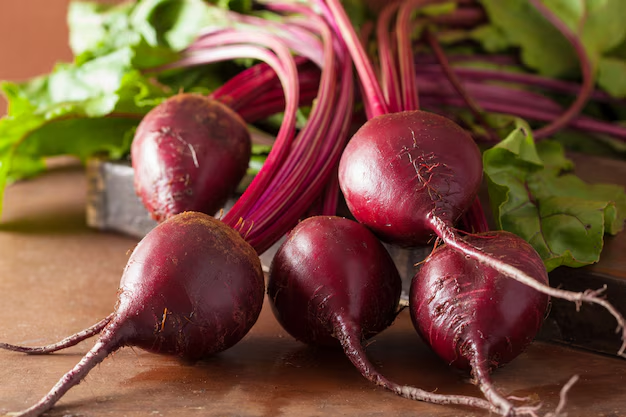
Beets are a natural powerhouse among foods that lower blood pressure due to their high nitrate content. Nitrates are converted into nitric oxide in the body, which helps relax blood vessels and improve blood flow. This process reduces arterial stiffness and lowers both systolic and diastolic blood pressure. Beets are not only nutritious but also versatile, allowing you to enjoy them in salads, roasted, or as fresh juice.
In addition to nitrates, beets are rich in potassium and fiber. Potassium plays a key role in balancing sodium levels, while fiber improves digestion and promotes heart health. The combination of these nutrients makes beets a highly effective natural remedy for managing hypertension. Regular consumption of beets has been associated with measurable reductions in blood pressure within a few hours, demonstrating their rapid impact on cardiovascular health.
Including beets in your diet is both simple and delicious. You can roast them with olive oil, blend them into smoothies, or enjoy fresh beet juice in the morning. By making beets a regular part of your meals alongside other foods that lower blood pressure, you can take advantage of their heart-protective properties while enjoying a natural, flavorful addition to your diet. 🌱🥕
Oats 🌾
Oats are an excellent choice among foods that lower blood pressure due to their high content of soluble fiber, especially beta-glucan. Soluble fiber helps reduce cholesterol absorption and improves blood vessel function, which directly impacts blood pressure regulation. Eating a bowl of oatmeal for breakfast or adding oats to smoothies can provide a steady source of nutrients that support heart health.
In addition to fiber, oats are rich in minerals like magnesium and potassium, both of which are essential for maintaining healthy blood pressure. Magnesium relaxes blood vessels, while potassium balances sodium levels, preventing fluid retention and arterial pressure spikes. The combination of these nutrients makes oats a natural and effective way to manage hypertension without relying solely on medications.
Oats are versatile and easy to include in your diet. You can prepare oatmeal with fresh berries, nuts, or seeds, or use oats in baked goods and smoothies. By regularly consuming oats alongside other foods that lower blood pressure, you provide your body with sustained support for cardiovascular wellness, reducing the risk of hypertension over time. 🌾🥣
Garlic 🧄
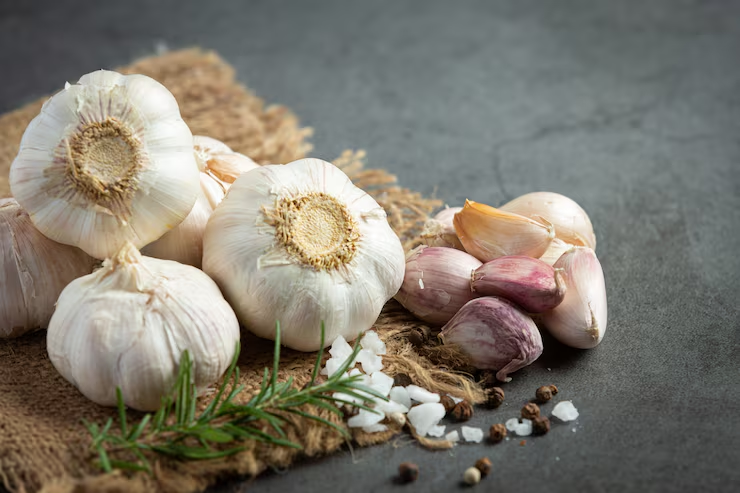
Garlic is widely recognized as one of the most effective foods that lower blood pressure due to its bioactive compound allicin. Allicin helps relax blood vessels and improve blood flow, which reduces the strain on your heart. Consuming garlic regularly can have measurable effects on both systolic and diastolic blood pressure, especially in people with mild hypertension.
In addition to allicin, garlic contains antioxidants that fight inflammation and oxidative stress in the vascular system. These properties not only help lower blood pressure but also improve overall cardiovascular health. Studies indicate that daily garlic intake, whether raw or cooked lightly, contributes to better arterial flexibility and reduced hypertension risk.
Garlic is versatile and can be easily incorporated into meals. You can use it in sauces, roasted dishes, stir-fries, or soups to enhance flavor while benefiting from its heart-protective properties. Including garlic alongside other foods that lower blood pressure ensures a natural, effective approach to maintaining optimal blood pressure levels. 🧄💚
Avocado 🥑
Avocado is a nutrient-dense superfood and one of the most effective foods that lower blood pressure. It is rich in potassium, magnesium, and heart-healthy monounsaturated fats, all of which contribute to optimal vascular function. Potassium helps balance sodium levels in the body, preventing fluid retention that can elevate blood pressure. Magnesium promotes the relaxation of blood vessels, allowing for smoother blood flow. By including avocado regularly in your diet, you can take a natural approach to blood pressure management.
In addition to its minerals and healthy fats, avocado is packed with antioxidants, including vitamin E and carotenoids, which reduce oxidative stress and inflammation in the arteries. Chronic inflammation is a significant contributor to hypertension, so the anti-inflammatory properties of avocado make it a valuable food for cardiovascular health. Studies have consistently shown that individuals who include avocado in their daily meals experience better blood pressure regulation over time.
Avocado is highly versatile and easy to include in various dishes. You can add it to salads, sandwiches, smoothies, or even enjoy it as a spread on whole-grain toast. By regularly consuming avocado along with other foods that lower blood pressure, you provide your body with sustained support for heart health while enjoying a creamy, delicious addition to your meals. 🥑💚
Bananas 🍌
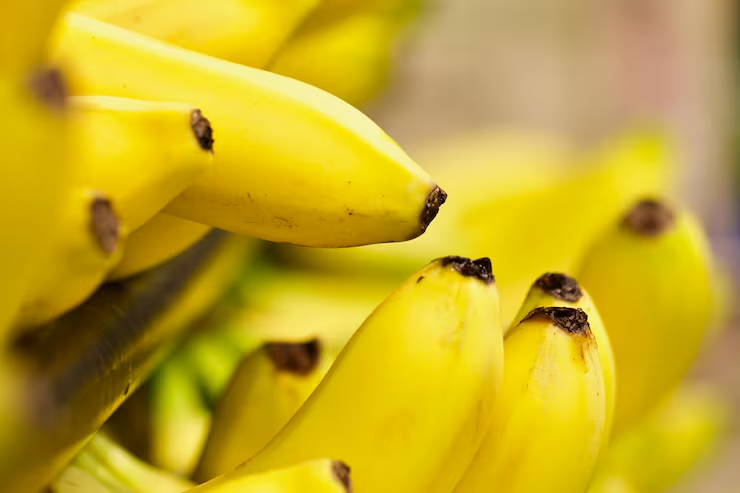
Bananas are a well-known source of potassium, making them one of the most accessible foods that lower blood pressure. Potassium is essential for balancing sodium levels in the body, which directly affects blood pressure regulation. Eating a banana daily can help reduce both systolic and diastolic blood pressure by supporting proper fluid balance and vascular function.
Bananas also contain magnesium and fiber, both of which contribute to overall cardiovascular health. Magnesium helps relax blood vessels, while fiber improves digestion and supports healthy cholesterol levels. Their combination makes bananas a natural, effective, and easy-to-consume solution for individuals looking to manage hypertension naturally.
Incorporating bananas into your daily routine is simple and convenient. They can be eaten on their own as a snack, sliced over cereal, blended into smoothies, or added to yogurt bowls. Including bananas regularly alongside other foods that lower blood pressure ensures that your diet is not only heart-healthy but also enjoyable, nutrient-rich, and supportive of long-term wellness. 🍌💛
Fatty Fish 🐟
Fatty fish, such as salmon, mackerel, and sardines, are among the most effective foods that lower blood pressure due to their high omega-3 fatty acid content. Omega-3s reduce inflammation, improve arterial elasticity, and enhance nitric oxide production, all of which support healthy blood pressure levels. Consuming fatty fish at least twice a week is highly recommended for maintaining cardiovascular health naturally.
In addition to omega-3s, fatty fish are rich in vitamin D and protein, which contribute to overall heart wellness. Vitamin D deficiency has been linked to increased blood pressure, so including fatty fish in your diet provides multiple benefits for vascular function. Regular consumption has been associated with reduced risk of heart attack, stroke, and hypertension.
Fatty fish can be prepared in a variety of ways, such as baking, grilling, or steaming, making it easy to include in your weekly meals. By incorporating fatty fish with other foods that lower blood pressure, you provide your body with essential nutrients that support heart health, reduce inflammation, and promote healthy vascular function naturally. 🐟💙
Nuts and Seeds 🌰
Nuts and seeds, including almonds, walnuts, flaxseeds, and chia seeds, are excellent foods that lower blood pressure due to their high content of magnesium, potassium, and healthy fats. These nutrients work together to relax blood vessels, improve circulation, and balance sodium levels, all of which help regulate blood pressure.
Beyond minerals and healthy fats, nuts and seeds are also rich in fiber and antioxidants. Fiber helps reduce cholesterol and maintain healthy blood sugar levels, while antioxidants combat inflammation and oxidative stress in the arteries. Regular consumption of nuts and seeds has been associated with lower rates of hypertension and better overall cardiovascular health.
Nuts and seeds are versatile and easy to integrate into your diet. They can be eaten as snacks, added to oatmeal, sprinkled over salads, or blended into smoothies. By including nuts and seeds alongside other foods that lower blood pressure, you enhance your heart health naturally while enjoying a nutrient-dense, satisfying addition to your meals. 🌰💚
Dark Chocolate 🍫
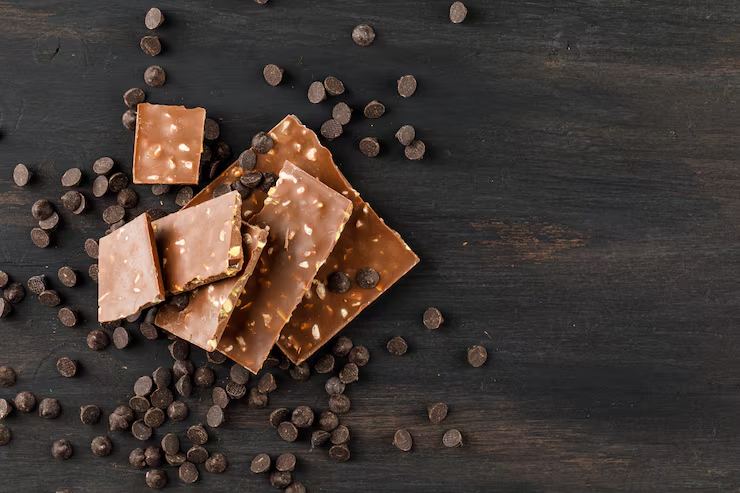
Dark chocolate, especially varieties with 70% or higher cocoa content, is a delicious addition to foods that lower blood pressure. Cocoa contains flavonoids that stimulate nitric oxide production in blood vessels, helping them relax and reduce blood pressure. Consuming moderate amounts of dark chocolate has been shown to significantly lower both systolic and diastolic blood pressure.
In addition to flavonoids, dark chocolate provides antioxidants that fight oxidative stress and inflammation in the arteries, which are key contributors to hypertension. Unlike milk chocolate, dark chocolate has less sugar and more concentrated cocoa content, making it a healthier option for blood pressure management.
Dark chocolate can be consumed in small portions as a snack, melted into desserts, or added to smoothies. Including dark chocolate alongside other foods that lower blood pressure allows you to enjoy a heart-healthy treat while actively supporting cardiovascular wellness naturally. 🍫💖
Green Tea 🍵
Green tea is rich in catechins, which are powerful antioxidants that make it one of the best foods that lower blood pressure. Catechins improve blood vessel flexibility, enhance nitric oxide production, and reduce arterial stiffness, all of which contribute to healthy blood pressure levels. Drinking 2–3 cups of green tea daily can provide measurable benefits for cardiovascular health.
Green tea also supports weight management and reduces systemic inflammation, which are both important for maintaining optimal blood pressure. Unlike caffeinated beverages like coffee or energy drinks, green tea provides a gentle energy boost while simultaneously promoting vascular wellness.
Green tea is easy to integrate into your daily routine, whether consumed hot or iced. By combining green tea with other foods that lower blood pressure, you can enjoy a natural, effective, and enjoyable approach to supporting heart health and preventing hypertension over the long term. 🍵💚
Tomatoes 🍅
Tomatoes are nutrient-dense and among the most accessible foods that lower blood pressure due to their high potassium and lycopene content. Potassium helps counterbalance sodium in the body, while lycopene is a potent antioxidant that reduces oxidative stress and improves arterial function. Regular consumption of tomatoes supports healthy blood pressure and overall cardiovascular wellness.
In addition to potassium and lycopene, tomatoes provide fiber, vitamin C, and other antioxidants that help reduce inflammation in blood vessels. Chronic inflammation is a major contributor to hypertension, so incorporating tomatoes into your diet naturally supports heart health and blood pressure regulation.
Tomatoes can be enjoyed raw in salads, cooked into sauces, or blended into soups and smoothies. By including tomatoes alongside other foods that lower blood pressure, you create a nutrient-rich, flavorful, and heart-healthy diet that helps maintain optimal blood pressure levels naturally. 🍅❤️
Conclusion
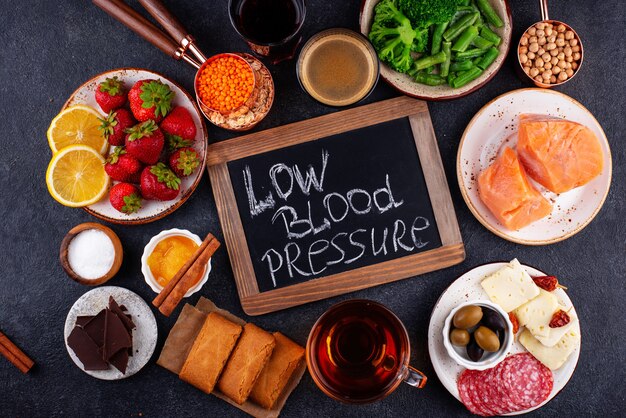
Incorporating foods that lower blood pressure into your diet is one of the most effective natural strategies to maintain heart health and prevent hypertension. From leafy greens like spinach to nutrient-rich fruits like berries and bananas, each food plays a specific role in regulating blood pressure, improving vascular function, and reducing inflammation. By making these foods a daily habit, you are investing in long-term wellness and reducing the risk of serious cardiovascular complications. 🥗💖
The benefits of these foods extend beyond blood pressure management. They contribute to overall health by supporting weight management, improving digestion, enhancing metabolic function, and providing essential nutrients that the body needs to function optimally. Eating a diverse variety of foods that lower blood pressure ensures a balanced intake of vitamins, minerals, fiber, and healthy fats, creating a holistic approach to heart wellness.
Finally, integrating these foods into a lifestyle that includes regular exercise, stress management, and adequate sleep maximizes their effectiveness. Small, consistent changes can lead to significant improvements in health, helping you maintain healthy blood pressure levels naturally. By prioritizing these delicious, nutrient-packed foods, you are not only taking control of your blood pressure but also fostering overall vitality and longevity. 🌟🍽️
FAQs
Q1. Can eating certain foods really lower blood pressure naturally?
Yes! Consuming foods that lower blood pressure rich in potassium, magnesium, and antioxidants can help relax blood vessels and reduce strain on the heart. Regular intake of these foods, alongside a balanced lifestyle, has been proven to manage and sometimes prevent hypertension naturally.
Q2. How many servings of blood-pressure-lowering foods should I eat daily?
Aim for at least 4–6 servings of foods that lower blood pressure per day, including fruits, vegetables, whole grains, and lean proteins. This ensures adequate nutrient intake for heart health and helps maintain optimal blood pressure levels consistently.
Q3. Are there any foods to avoid if I want to lower blood pressure?
Yes, limit processed foods, high-sodium snacks, sugary drinks, and fried foods. These can raise blood pressure and counteract the benefits of foods that lower blood pressure. Prioritizing fresh, nutrient-rich options is key to long-term heart health.
Q4. Can children benefit from foods that lower blood pressure?
Absolutely! Children can benefit from a diet rich in foods that lower blood pressure, especially if there is a family history of hypertension. Introducing fruits, vegetables, and whole grains early supports lifelong heart health and healthy growth.
Q5. How long does it take to see results from eating these foods?
Results vary depending on lifestyle and baseline health, but many individuals notice improvements in blood pressure within a few weeks of consistently eating foods that lower blood pressure and following a heart-healthy routine. Patience and consistency are essential.
